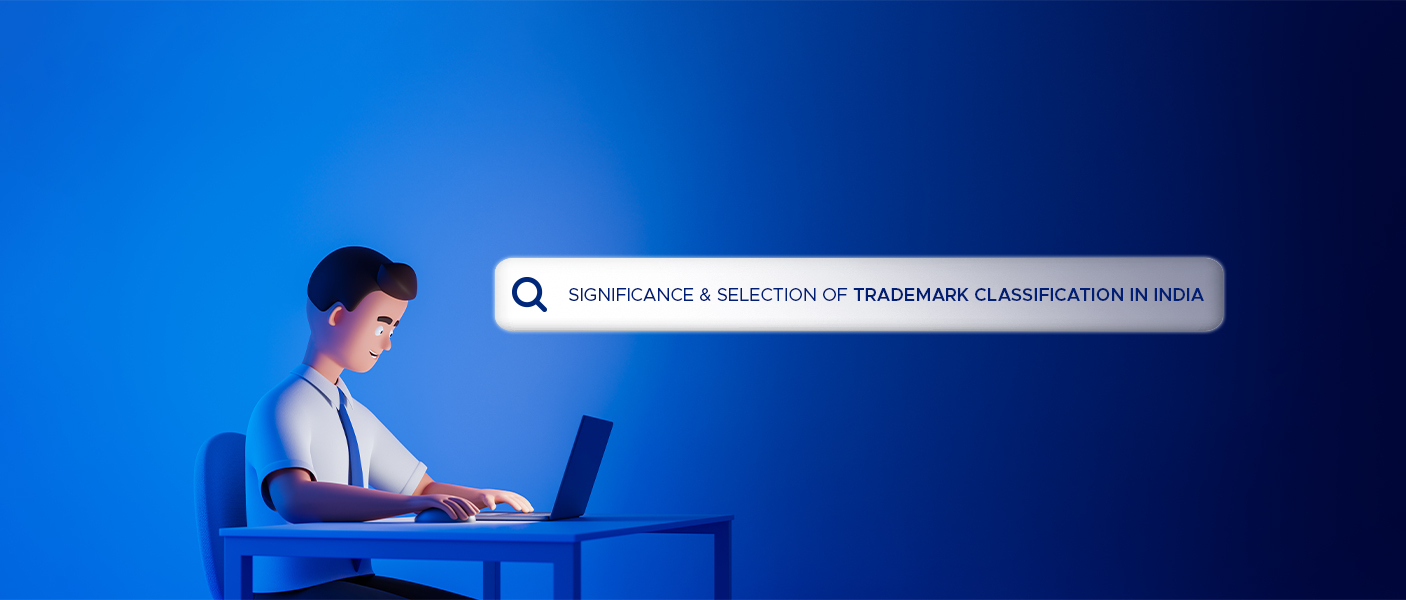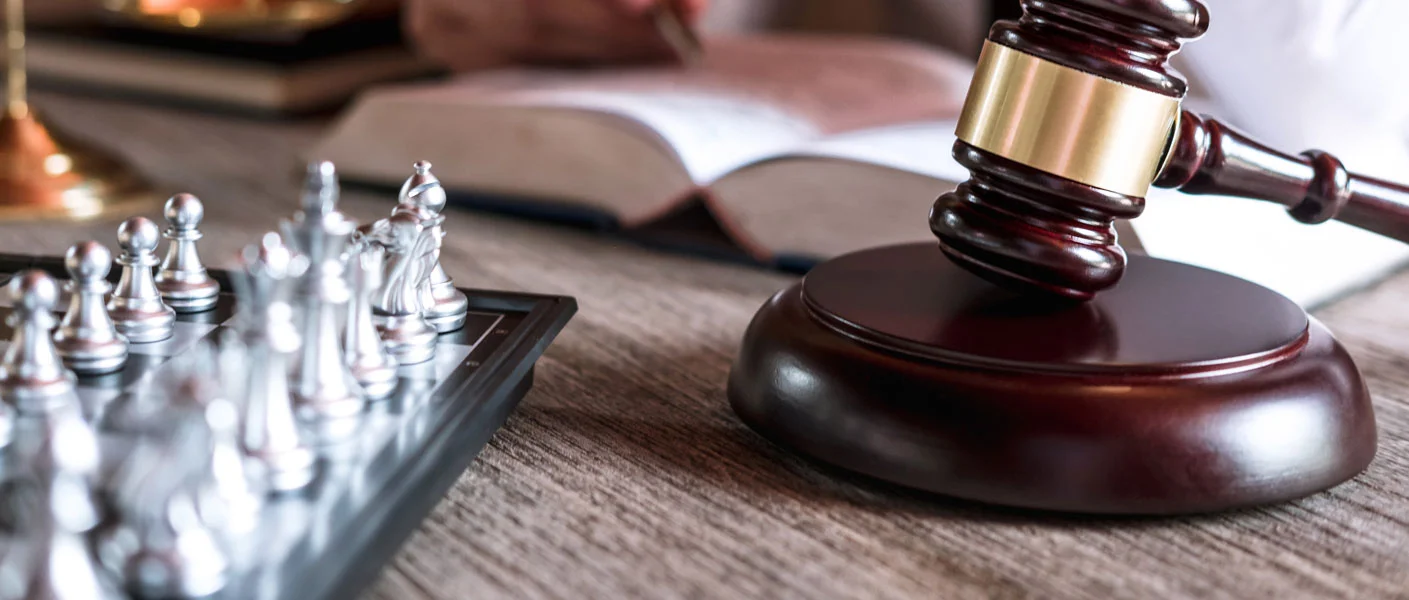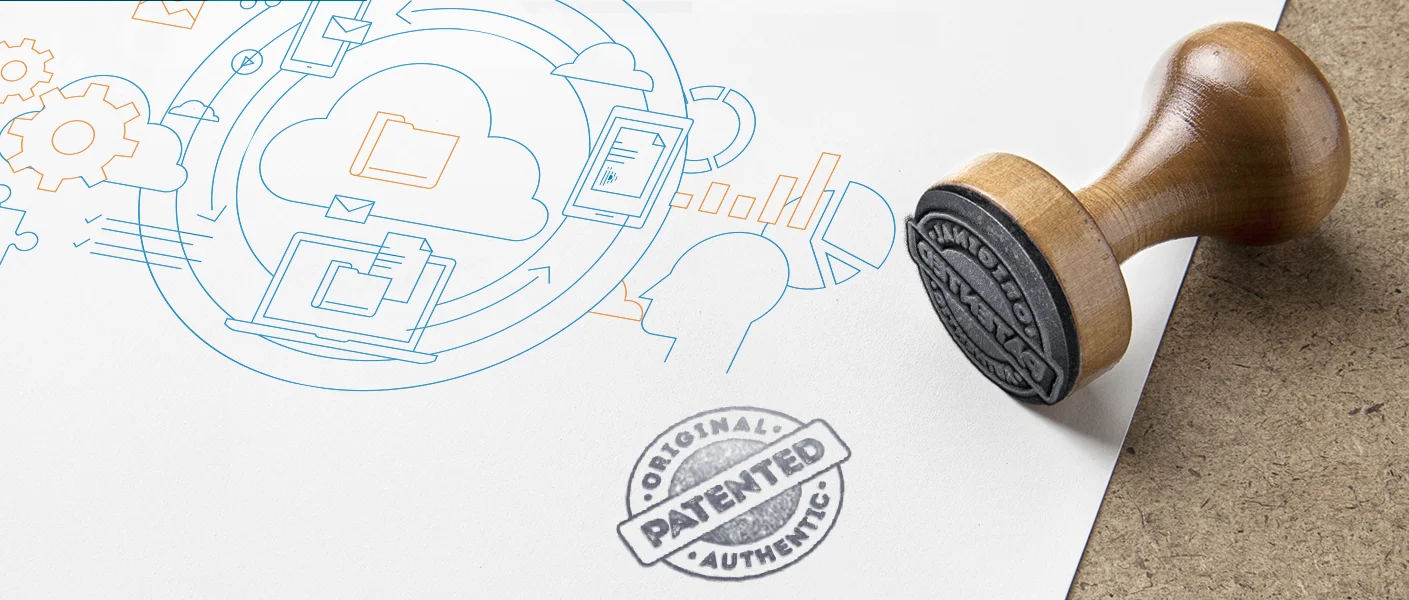Significance & Selection of Trademark Classification in India
March 10, 2023 By Sonal BhattDid you know that for your trademark registration to be successful, you must register your business into the right trademark class and there is a long list for it? Yes, there are many categories of trademarks in India that are classified into several classes about which you must know
What is Trademark: A Quick Recap
A form of IPR, i.e., Intellectual Property Rights, a Trademark, can be any expression - a word, symbol, color, logo, sound mark, shape of goods or combination that differentiates a particular product or service from its competitors. By registering a trademark under the Trademark Act of 1999, the owner gets exclusive rights to legally protect their trademark along with the power to file a suit in case of any violation of trademark law.
Trademark Registration in India and its Importance
Trademark registration is often underrated whereas it is a must even if you own a small-scale business, because infringement can happen from anywhere and you would not want anyone to earn profit by misusing what’s rightfully yours. Therefore, it is important to register your trademark because there are also several benefits of it as well. They are as follows:
- First of all, trademark registration will help your customers identify you easily among the crowd and will make you stand out from your competition.
- You gain exclusive rights to protect, transfer, sell, or grant permission to someone regarding the usage of your trademark.
- Trademark registration will bestow upon you the power to punish anyone who uses the trademark without your consent.
- It will give you all - brand protection, recognition, and exposure, and will also build trust among consumers.
- With a registered trademark, your market value will increase which in turn will improve your sales and profit.
Trademark Classes
Not all businesses are the same; hence they cannot be registered under the same category in trademark registration, which is why our Indian Trademark Registry has trademark classes. Primarily, trademark registrations are of two types - Trademark Registration for Goods and Trademark Registration for Services. There are 45 classes in total that you must go through while applying for registration, to decide under which class your business falls.
Trademark Classification
A trademark classification is the classification of services and goods, and different classes are used to categorize them. In India, trademarks have been classified as a type of intellectual property and therefore, trademarks and the rights of trademark owners are protected from infringement by a third party by the Trademark Act 1999.
According to Section 7 of the Trademark Act,
(1) The Registrar shall classify goods and services, as far as possible, by the International Classification of goods and services to register trademarks.
(2) Any question arising as to the class within which any goods or services fall shall be determined by the Registrar whose decision shall be final.”
India follows the classification popularly known as The International (NICE) Classification of Goods and Services which is a system established for the purposes of the registration of marks by an Agreement concluded at the Nice Diplomatic Conference, on June 15, 1957, which was revised at Stockholm, in 1967, and at Geneva, in 1977. India acceded to the Nice Agreement on September 7, 2019, and at present, the current version of the Nice Classification is being used by the Indian trademark office while examining a trademark application in India.
Therefore, under Section 8 of the Trademarks Act, 1999, the Registrar has published an alphabetical index of classification of goods and services as per the NICE classification, and on the whole, there are 45 trademark classes. Out of these, 1 to 34 classes are for goods or products, and the remaining 11 classes, i.e. from 35 to 45 are for services. These classes are categorized based on the type of product or service, its geographical location, and the way it is marketed.
The purpose of giving classes or categories in Trademarks is to divide competition because industries in the same category of business are considered competitors and they cannot use similar trademark terms or logos. Others within the same industry might be allowed to use similar trademarks.
NICE classifications include a broad heading called "Class Header" which describes what type of goods or services are covered under each classification. Check out the tabular representation of classes and the respective headings for the registration of trademarks below.
Classification of Trademark for Goods or Products
| Class |
Class Header |
|---|---|
| 01 | Chemicals used in industry, science, photography, agriculture, horticulture, and forestry; Unprocessed artificial resins and plastics; Manures; Fire extinguishing and prevention compositions; Tempering and soldering preparations; Chemical substances for preserving foodstuffs; tanning animal skins and hides; Adhesive; Putties and other paste fillers used in industry. |
| 02 | Paints, varnishes, lacquers; Preservatives against rust and against deterioration of wood; Colorants, dyes; Inks for printing, marking, and engraving; Mordants, Raw natural resins; Metals in foil and powder form for use in painting, decorating, printing and art. |
| 03 | Non-medicated cosmetics and toiletry preparations; Bleaching preparations and other substances for laundry use; Cleaning, polishing, scouring, and abrasive preparations, Non-medicated dentifrices; Perfumery, essential |
| 04 | Industrial oils, greases, and wax; Lubricants; Dust-absorbing, wetting, and binding compositions; Fuels (including motor spirit) and illuminants; Candles and wicks for lighting. |
| 05 | Pharmaceuticals, medical, sanitary, and veterinary preparations; Dietetic food and substances adapted for medical or veterinary use, food for babies; Dietary supplements for human beings; Plasters, materials for dressings, disinfectants; Preparations for destroying vermin; Fungicides, herbicides; Material for stopping teeth, dental wax. |
| 06 | Common metals and their alloys, ores; Metal materials for building and construction; Transportable buildings of metal; Non-electric cables and wires of common metal; Small items of metal hardware castings, locks and safes; Metal containers for storage or transport; Materials of metal for railway tracks; Ironmongery; Pipes and tubes of metal; Goods of common metal not included in other classes; Ores. |
| 07 | Machines, machine tools, power-operated tools; Automatic vending machines; Motors and engines, machine coupling and transmission components, except for land vehicles; Agricultural implements, other than hand-operated hand tools; Incubators for eggs. |
| 08 | Hand-operated tools and implements; Cutlery; Side arms, except firearms; Razors |
| 09 | Scientific, research, navigation, surveying, photographic, cinematographic, audiovisual, optical, weighing, measuring, signaling, detecting, testing, inspecting, life-saving and teaching apparatus and instruments; Fire-extinguishing apparatus; Apparatus and instruments for conducting, switching, transforming, accumulating, regulating or controlling the distribution or use of electricity; Mechanisms for coin-operated apparatus; Cash registers, calculating devices; Apparatus and instruments for recording, transmitting, reproducing or processing sound, images or data; Recorded and downloadable media, computer software, blank digital or analog recording and storage media; Computers and computer peripheral devices; Diving suits, divers’ masks, ear plugs, nose clips, gloves, breathing apparatus for underwater swimming; |
| 10 | Surgical, medical, dental, and veterinary apparatus and instruments; Massage apparatus; Artificial limbs, eyes, and teeth; Orthopedic articles; Suture materials; Therapeutic and assistive devices adapted for persons with disabilities; Apparatus, devices, and articles for nursing infants, sexual activity. |
| 11 | Apparatus and installations for lighting, heating, cooling, steam generating, cooking, drying, ventilating, water supply and sanitary purposes. |
| 12 | Vehicles; Apparatus for locomotion by land, air, or water |
| 13 | Firearms; Ammunition and projectiles; Weapons; Explosives; Fireworks |
| 14 | Precious metals and their alloys; Horological and chronometric instruments; Jewelry, gemstones, pearls, and other precious and semi-precious stones; |
| 15 | Musical instruments; Music stands and stands for musical instruments; Conductors’ batons. |
| 16 | Paper and cardboard; Drawing materials and materials for artists; Printed matter; Bookbinding material; Photographs; Stationery and office requisites, except furniture; Paintbrushes; Instructional and teaching materials; Adhesives for stationery or household purposes; Plastic sheets, films, and bags for wrapping and packaging; Printers type, printing blocks. |
| 17 | Unprocessed and semi-processed rubber, gutta-percha, gum, asbestos, mica, and substitutes for all these materials; Flexible pipes, tubes, and hoses, not of metal; Packing, stopping, and insulating materials; Plastics and resins in extruded form for use in manufacture. |
| 18 | Leather and imitations of leather; Umbrellas and parasols; Walking sticks; Whips, harnesses, and saddlery; Collars, leashes, and clothing for animals; Animal skins and hides; Luggage and carrying bags. |
| 19 | Building materials, (non-metallic); Rigid pipes (non-metallic) for building; Asphalt, pitch, tar, and bitumen; Non-metallic transportable buildings, not of metal; Sculptures and works of art made of non-metallic materials like marble, concrete, and stone. |
| 20 | Furniture, mirrors, picture frames; Statues, figurines, artwork, ornaments, and decorations made of materials like wood, wax, plaster, or plastic; Containers, not of metal, for storage or transport; Unworked or semi-worked bone, horn, whalebone or mother-of-pearl; Shells; Meerschaum; Yellow amber; Beds and housing for animals, |
| 21 | Household or kitchen utensils and containers; Cookware, glassware, porcelain, and earthenware and tableware, except forks, knives, and spoons; Combs and sponges; Brushes, except paintbrushes; Brush-making materials; Articles for cleaning purposes; Utensils for beauty, hygiene, and cosmetic care, Unworked or semi-worked glass, except building glass. |
| 22 | Ropes and string; Nets; Tents and tarpaulins; Padding, cushioning, and stuffing materials, except paper, cardboard, rubber, or plastics; Awnings of textile or synthetic materials; Sails; Sacks for the transport and storage of materials in bulk; Raw fibrous textile materials and their substitutes. |
| 23 | Yarns and threads, for textile use. |
| 24 | Textiles and their substitutes; Household linen; Curtains of textile or plastic; Textile filtering materials. |
| 25 | Clothing, footwear, and headwear. |
| 26 | Accessories for clothing, sewing supplies, and textile decors like lace, braid and embroidery, and haberdashery ribbons and bows; Artificially created vegetables, flowers, and fruit charms; False hair, hair accessories, hair fastening tools, and hair rollers, Entomology pins and needles. |
| 27 | Artificial ground and floor coverings like mats, rugs, and carpets of both textile and other materials; Wall and ceiling coverings. |
| 28 | Games, toys, and playthings; Video game apparatus; Decorations for Christmas trees; Gymnastic and sporting articles. |
| 29 | Meat, fish, poultry; Meat extracts; Preserved, frozen, dried, and cooked fruits and vegetables; Jellies, jams, compotes; Eggs; Oils and fats for food; Dairy goods and dairy-free options; Nuts and pulses. |
| 30 | Coffee, tea, cocoa and substitutes thereof; Bread, pastries, and confectionery; Chocolate; Ice cream, sorbets, and other edible ices; Rice, pasta, and noodles; Tapioca and sago; Flour and preparations made from cereals; Vinegar, sauces and other condiments; Ice [frozen water]; Sugar, honey, treacle; Yeast, baking-powder; Salt, seasonings, spices, preserved herbs. |
| 31 | Raw and unprocessed agricultural, aquacultural, horticultural, and forestry products, grains and seeds; Fresh fruits, herbs, and vegetables; Natural plants and flowers; Bulbs, seedlings, and seeds for planting; Live animals and breeding organisms; Foodstuffs and beverages for animals; Malt. |
| 32 | Beers; Non-alcoholic beverages; Fruit beverages and fruit juices; Syrups and other preparations for making non-alcoholic beverages; Mineral and aerated waters. |
| 33 | Alcoholic beverages, except beers; Alcoholic essences, extracts, and alcohol-containing ingredients for making beverages |
| 34 | Tobacco and tobacco substitutes; Cigarettes and cigars; Electronic cigarettes and oral vaporizers for smokers; Smokers’ articles; Flavorings and Solutions for the Same; Matches. |
Classification of Trademark for Services
| 35 | Advertising; Business management, organization (commercial included), and administration; Office functions. |
| 36 | Financial, monetary, and banking services; Insurance services; Real estate affairs. |
| 37 | Mining extraction, oil and gas drilling; Construction; Installation and repair services. |
| 38 | Telecommunications services whether audio or visual. |
| 39 | Transport; Packaging and storage of goods; Travel arrangement. |
| 40 | Treatment of materials which includes processing, alteration, or transformation of objects, inorganic materials, or substances; Recycling of mechanical, chemical, or biological waste and trash; Air purification and treatment of water; Printing services; Food and drink preservation. |
| 41 | Education; Providing of training to improve the knowledge or mental capacity of a person or animal; Entertainment; Sporting and cultural activities. |
| 42 | Scientific and technological services and research and design relating thereto; Design and development of computer hardware and software; Industrial analysis, research and design services; Quality control and authentication services. |
| 43 | Services for providing and delivering food and drink; Temporary accommodation for humans and animals, Renting furniture, linens, tablecloths, and other supplies for serving food and beverages; Information, guidance, and reservation services for temporary lodging. |
| 44 | Medical services; Veterinary services; Hygienic, aesthetic, and beauty care for human beings or animals; Agriculture, aquaculture, horticulture and forestry services. |
| 45 | Legal services; Security services for the physical protection of tangible property and individuals; Personal and social services rendered by others to meet the needs of individuals. |
Selection of Trademark Classification in India and its Importance
Due to the long list of trademark classes, it can be confusing to decide which class your business belongs to. Since it is important to identify your class before filing a trademark application, it is advisable to seek help of an experienced trademark attorney or trademark examiner for the selection of trademark class because if you get your class wrong, your application will be rejected.
Trademark attorneys and trademark examiners understand the trademark classes well and can easily identify the class under which you must register your business. They can also help speed up your trademark registration process by arranging the required documents, such as trademark and service mark applications, according to the description and scope of the types of goods or services to which the trademarks apply.
Identification of trademark class with the help of a trademark lawyer will also narrow down your trademark search because rather than looking through thousands or even lakhs of registered trademarks to find out if there is a mark that is similar to yours, you can simply search for a prior trademark in the class where you want to register your trademark in India.
FAQs
1) Is there any government site for information on the trademark classes?
Yes. Since a trademark is Intellectual Property, you can find the trademark's class details on the official Intellectual Property India website (ipindia.gov.in).
It’s important to note that the following tools from leading global organisations are also available for the purpose of classification of goods & services for registration of trademark in India.
- Nice Classification tool by the World Intellectual Property Organization
- TMClass tool by the European Union Intellectual Property Office
We recommend using the TMClass tool since the tool specifically includes the Indian trademark office while classifying and highlighting goods or services that may not be acceptable by the Indian trademark office.
2) How to know whether the selected class is right or wrong for my business?
By reading the class headers you will get a clear idea under which class you must register your trademark, although it is better to seek the assistance of a trademark lawyer who is well-versed in trademark protection.
3) What happens if I select the wrong trademark class?
If you file your trademark application under the wrong class, your application will be rejected and you will lose your registration fees as well. Hence, doing it with the help of a trademark professional is advisable.
Conclusion
Deciding the class for your business requires the eye of an expert because, the nature and objective of the products or services, whether or not the products include any raw materials. what tasks are performed by the service, and what is the nature of the services being offered, all such factors are to be taken into consideration while determining a trademark class.
Therefore, to avoid confusion and rejections, and to achieve a successful trademark registration in India in one go, approaching the expert legal professionals of Parker and Parker LLP should be your next step. Feel free to contact us and seek advice anytime!





